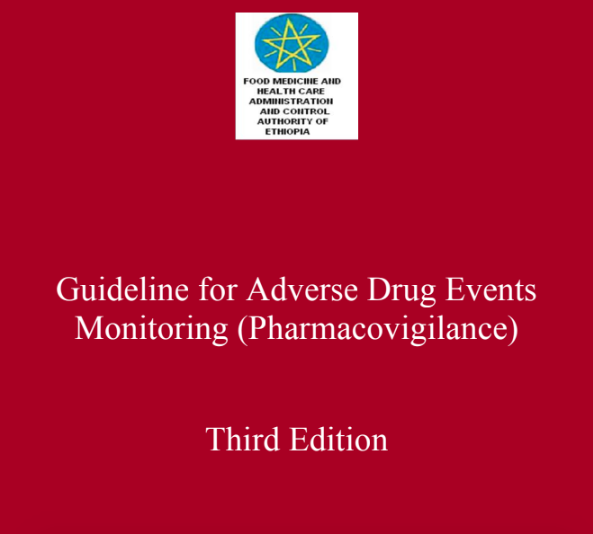Fill out the form below to receive the complete PDF guide directly in your inbox. This resource provides clear, step-by-step guidance to help you make the most of the information we’ve prepared for you.
Ethiopia
Guideline for Adverse Drug Events Monitoring (Pharmacovigilance), Third Edition
This third edition guideline from Ethiopia’s FMHACA expands the scope of pharmacovigilance to cover all Adverse Drug Events (ADEs), including ADRs, medication errors, and product quality defects. It outlines the specific roles and responsibilities of all stakeholders, from patients and healthcare professionals to Marketing Authorization Holders (MAHs) and Public Health Programmes. The document establishes clear processes for detecting, assessing, and reporting ADEs, defines reporting timelines for MAHs, and details the national authority’s procedures for signal detection, evaluation, and subsequent regulatory actions to ensure medicine safety.

Use Cases
- Marketing Authorization Holders (MAHs) – Fulfill Reporting Obligations: To report serious ADRs within 15 calendar days and non-serious ADRs within 90 days, and to submit Periodic Safety Update Reports (PSURs) for new medicines.
- Healthcare Professionals – Detect and Report all ADEs: To be vigilant for and report not just ADRs but also medication errors and product quality defects using the provided reporting form or other channels like the toll-free line.
- Drug and Therapeutic Committees (DTCs) – Manage Medication Use at the Facility Level: To implement programs to track ADEs, assess causality, analyze trends, and design local interventions like provider education or formulary changes to improve patient safety.
- Patients and Consumers – Report Suspected ADEs: To report any suspected medicine-related problems to a healthcare professional, enabling the issue to be formally documented and reported to the national pharmacovigilance center.
- Food, Medicine and Healthcare Administration and Control Authority (FMHACA) – Oversee National Pharmacovigilance: To receive and analyze ADE reports, monitor for safety signals, perform causality assessments, and take preventative actions such as issuing safety letters or initiating medicine recalls.
- Public Health Programmes (PHPs) – Integrate PV into Health Initiatives: To monitor medicines used in large-scale programs (e.g., for HIV, TB, malaria) and collaborate with the regulatory authority on monitoring priorities and communicating safety issues.
Key takeaways you'll learn
The resource’s purpose is to establish a comprehensive national pharmacovigilance framework in Ethiopia that goes beyond traditional ADR reporting to include all adverse drug events, thereby enhancing patient safety through the collaborative efforts of all stakeholders in the healthcare system.
- Expanded Scope to All ADEs: The guideline explicitly broadens the monitoring focus from just ADRs to include medication errors, product quality defects, and unexpected therapeutic ineffectiveness, treating all as reportable events.
- Patient and Consumer Involvement: It formally recognizes patients and consumers as key stakeholders in pharmacovigilance, encouraging them to report problems to healthcare professionals.
- Defined Responsibilities for MAHs: Marketing Authorization Holders are given clear responsibilities, including timelines for reporting serious (15 days) and non-serious (90 days) ADRs and the requirement to submit Risk Management Plans (RMPs).
- Role of the Drug and Therapeutic Committee (DTC): The DTC is empowered at the health facility level to actively track ADEs, analyze local data, and implement corrective actions, creating a decentralized layer of safety management.
- Structured Signal Management Process: FMHACA’s role is clearly defined to include a systematic process of signal detection, assessment in collaboration with an advisory committee, and implementation of preventative actions like label changes or recalls.


